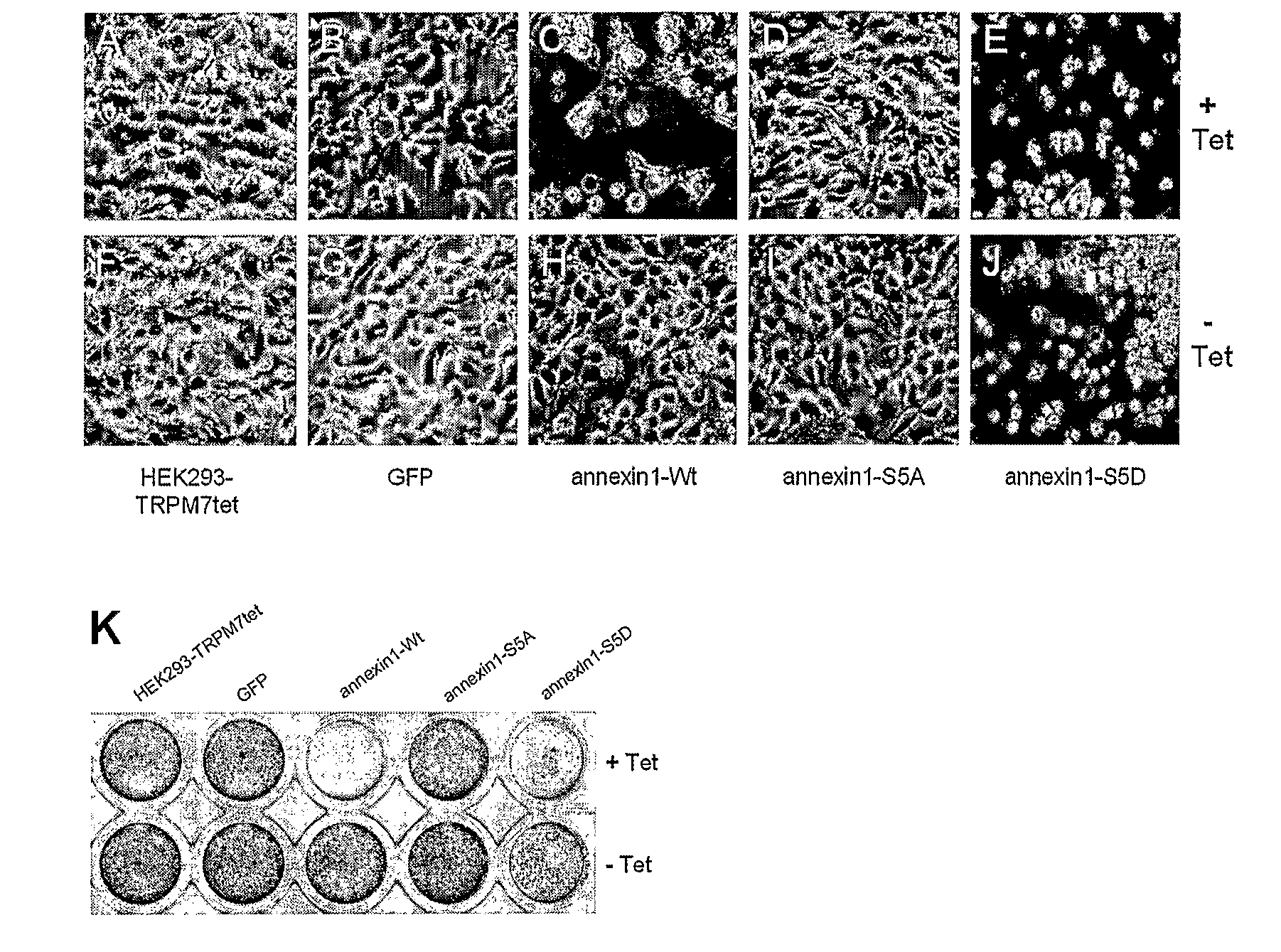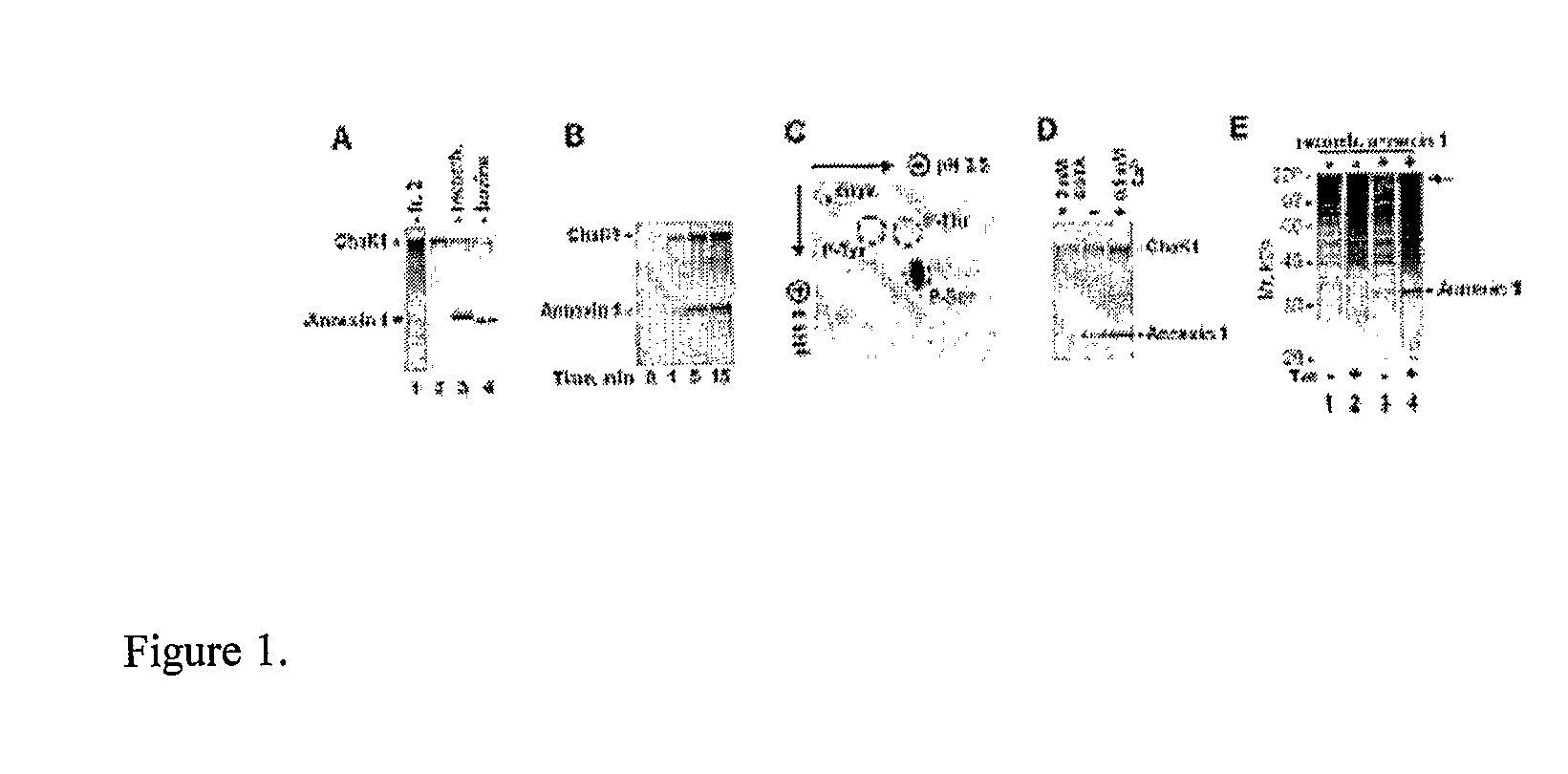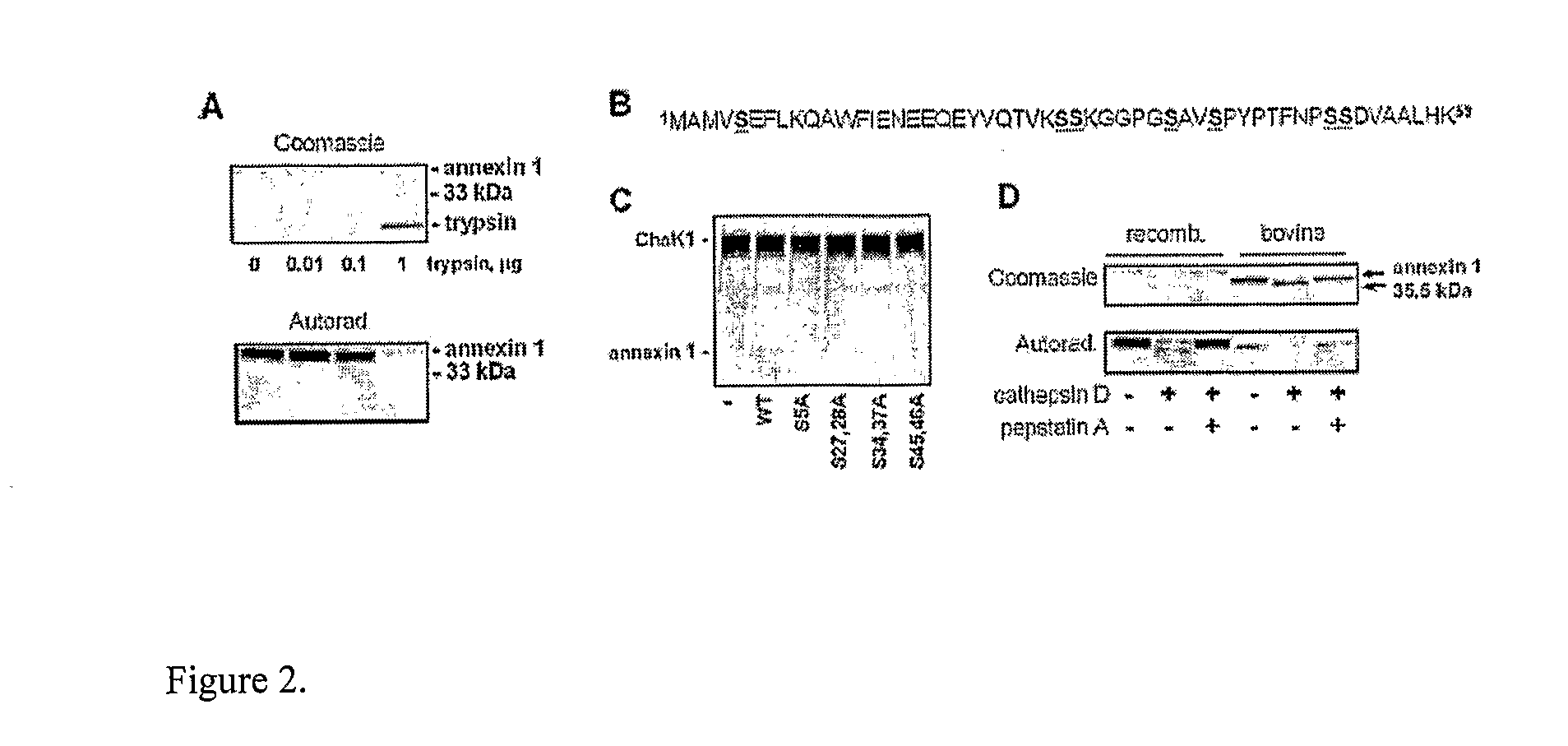Novel modification of immunomodulatory protein
- Summary
- Abstract
- Description
- Claims
- Application Information
AI Technical Summary
Benefits of technology
Problems solved by technology
Method used
Image
Examples
example 1
Fractionation of Cell Lysates and Analysis of Fractions for Phosphorylated Proteins
[0048]Mouse C2C12 cells were collected by trypsinization, washed with ice-cold phosphate-buffered saline, and lysed using Dounce homogenizer in ice-cold buffer containing 30 mM Tris-HCl (pH 8.0), 20 mM NaCl, 1 mM MgCl2, 1 mM EDTA, 800 μl / L β-mercaptoethanol, 5% glycerol (w / v), complete protease inhibitor (Roche), and 1 mM phenylmethylsulfonyl fluoride. The lysates were cleared twice by centrifugation at 30,000×g for 30 min at 4° C. The cleared lysate (containing 20 mg of total protein) was then fractionated by fast protein liquid chromatography on Mono Q HR 5 / 5 column (Amersham Biosciences) using 20-500 mM NaCl gradient. 40 fractions were collected (1 ml each). 10 μl of each fraction were incubated with [γ-33P]ATP in phosphorylation mixture (as described below) with or without the addition of recombinant ChaK1. C2C12 cell lysate was fractionated by chromatography on Mono Q column using 20-500 mM NaCl ...
example 2
[0049]Protein samples were incubated in phosphorylation mixture consisting of 50 mM HEPES-KOH (pH 7.4), 10 mM MgCl2, 4 mM MnCl2, 0.5 mM CaCl2 (unless stated otherwise), 100 μM ATP, and 2 μCi of [γ-33P]ATP (specific activity of 3000 Ci / mmol) with 0.1 μg of purified recombinant ChaK1. In assays involving annexin 0.5 μg of annexin was used. The reactions were run at 30° C. for 5 min and were terminated by incubation in an ice / water bath and addition of Laemmli sample buffer. Samples were boiled for 5 min and analyzed by SDS-PAGE and autoradiography.
[0050]A sample from each fraction was incubated with [γ-33P]ATP in phosphorylation mixture with or without addition of purified recombinant ChaK1. Fraction number 2 contained a polypeptide with the molecular mass of ˜37 kDa that was intensively phosphorylated by ChaK1 (FIG. 1A).
example 3
Preparation of Samples for MALDI-TOF Analysis
[0051]Coomassie-stained polypeptide was excised from the SDS-PAGE gel and digested with trypsin as described (Jimenez, C. R., Huang, L., Qiu, Y., and Burlingame (1998) Current Protocols in Protein Science 16.3.1-16.3.6., John Wiley & Sons, Inc., USA). The samples were prepared according to manufacturers protocol (Applied Biosystems). The samples were analyzed using mass spectrometer Voyager-DE PRO Workstation (Applied Biosystems) in reflector mode. The obtained monoisotopic peptide masses were run against NCBI and Swiss-Prot databases using MS-Fit (Protein Prospector) and PetIdent programs.
[0052]The Coomassie-stained 37-kDa polypeptide was excised from the gel in Example 1 and subjected to digestion with trypsin as described in Example 6. The resulting peptides were analyzed by MALDI-TOF mass spectrometry. The obtained masses of tryptic peptides were scanned against NCBI and Swiss-Prot protein data bases using MS-Fit (Protein Prospector) ...
PUM
| Property | Measurement | Unit |
|---|---|---|
| Cell death | aaaaa | aaaaa |
Abstract
Description
Claims
Application Information
 Login to View More
Login to View More - R&D Engineer
- R&D Manager
- IP Professional
- Industry Leading Data Capabilities
- Powerful AI technology
- Patent DNA Extraction
Browse by: Latest US Patents, China's latest patents, Technical Efficacy Thesaurus, Application Domain, Technology Topic, Popular Technical Reports.
© 2024 PatSnap. All rights reserved.Legal|Privacy policy|Modern Slavery Act Transparency Statement|Sitemap|About US| Contact US: help@patsnap.com










